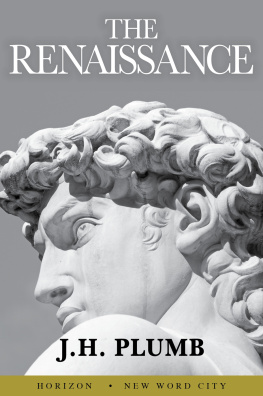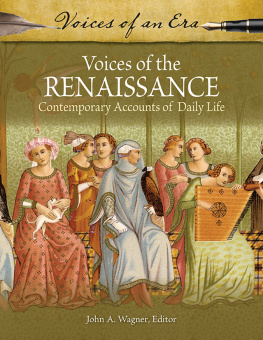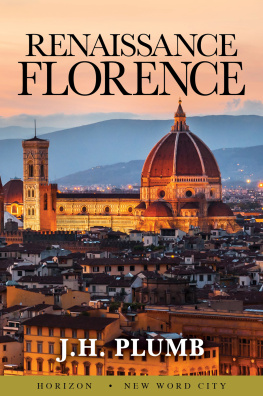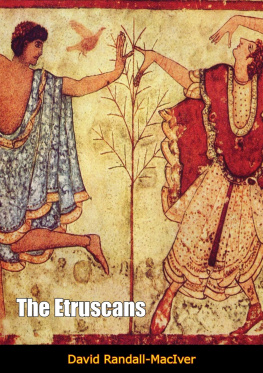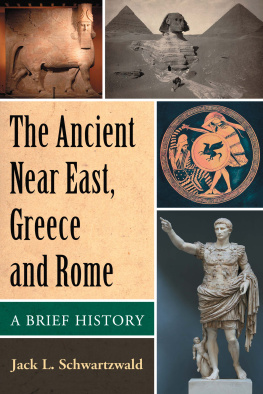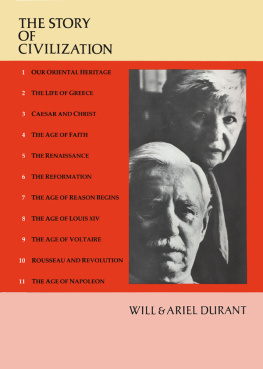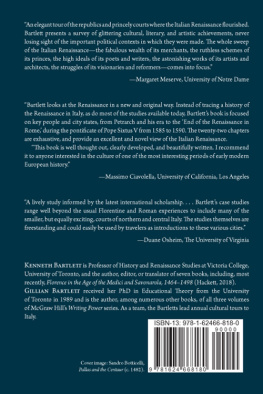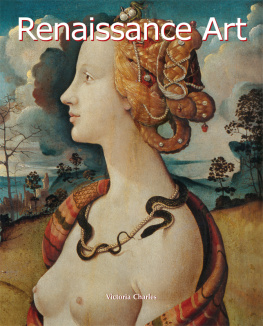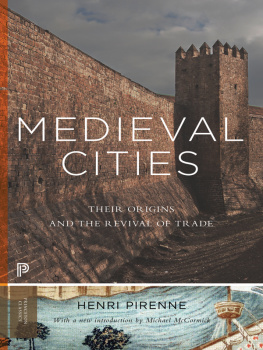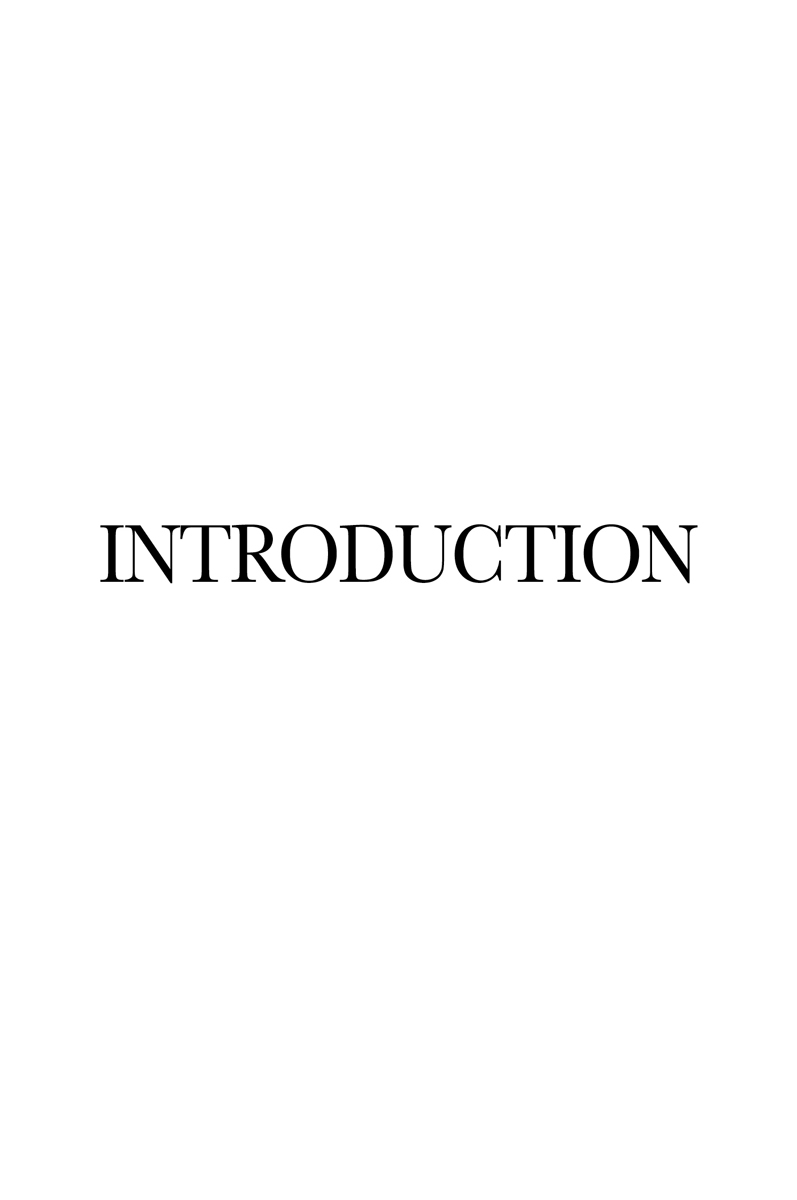We have a habit of wanting to know where we have been and what we have done. This is our way of assessing the present and reassuring ourselves about the future, for we are heir to our past and, just possibly, history may repeat itself. There are few ages that make us as proud of our humanity as the one called the Renaissance.
Curiously, scholars dont agree what the Renaissance was or when it took place. Some historians date the Renaissance from the twelfth or thirteenth centuries, while others say the Middle Ages lasted until the seventeenth; others argue that the Renaissance began with the fall of Constantinople in 1453 or with the introduction of the Gutenberg press in 1451. As for what it was some call it the birth of modernity, others a rebirth of interest in the classics, still others an emancipation from darkness, a transition from medieval to modern times, or simply an era of unsurpassed creativity. There are even those who claim it did not happen at all.
This last opinion is, of course, an exaggeration. So many novel forces and ideas came to life in Western Europe in the fifteenth and sixteenth centuries and so many old forms and thoughts were abandoned - that it is impossible not to view these years as a period of spiritual revolution. Before 1400, no one thought of building a permanent theater and staging a secular play in it; by 1600, theaters were springing up in cities everywhere, and accomplished playwrights were writing dramas for them. Before 1400, few artists would have dared paint a picture of a naked woman; by 1500, Sandro Botticelli had not only painted one of the most beautiful nudes in the world, but she represented Venus, a pagan deity. In 1350, no one in Western Europe could read a page of Greek; by 1500, thousands were studying the Greek classics, lost for a millennium. During the Middle Ages, Aristotle was considered the ultimate authority in many fields of thought; in 1536, Petrus Ramus took his doctorate with the daring thesis, Everything said by Aristotle is wrong. Changes as potent as these influenced almost every area of intellectual and social life, and many felt they were living in a world born anew.
Yet, if the word Renaissance has any widely accepting meaning, it indicates a time of artistic achievement that conjures the names Michelangelo and Leonardo da Vinci, Raphael and Botticelli, Donatello, Titian, and Benvenuto Cellini and images of their magnificent works of art. Renaissance painting and sculpture, music, architecture, literature; fabrics, metalwork, jewelry, and furniture all came impressively to life.
In the nineteenth century, Jacob Burckhardt proclaimed that the Renaissance was nothing short of the discovery of the world and of humankind itself, and his view of the period as a unique, self-generating epoch held for decades. Since that time, scholars have demonstrated that the Renaissance did not explode into the world full-blown, out of some medieval desert. Instead, the beginnings of ideas and institutions had taken root and developed through the centuries. The appreciation of arts and letters and the understanding of their relation to life known as humanism - existed during the Middle Ages; a body of literature had been recognized since classical times. The Renaissance was just part of a continuing, ever-widening stream.
What made this an extraordinary century and a half in Italy was a coincidence of genius and circumstance. The times in which men and women are born affect how they use their talents and energies. For arts to develop fully, there must be patrons willing to use their wealth to induce artists to create. It is not enough for genius or creativity simply to exist; they need care and nurturing.
By 1400, the foundation of the Italian Renaissance had been laid. There was burgeoning trade and industry, new wealth for individuals and cities, and increased political freedom and energy throughout the land. The prevailing mood was one of change and improvement; old moral restraints and medieval dogmas were crumbling, and in their place was a zeal for building on the classics of ancient Greece and Rome to create a better civilization. And finally, there was rivalry: between cities, merchant princes, artists, all vying to do better than anyone else. It was the wealthiest and most menacing age Europe had ever known; Italy possessed the greatest concentration of gifted individuals that the Western world had seen for 1,000 years, and the conjunction of men and the times produced an explosion of energy.
Although the Renaissance was not exclusively Italian, it began there and developed there, and nowhere else was the scale so large, nor the roots so wide or deep. The Italians were pioneers on a frontier which would be explored by Dutch, English, French, Spanish, and other Europeans during the sixteenth and seventeenth centuries. They opened the windows on a new world that we have been exploring ever since.
The face of medieval Europe was scarred with the ruins of its past. In Rome, the Colosseum housed the barbarous Frangipani family and their greedy, lawless, destructive retainers; the Forum provided rough pasture for the cattle market, and beneath the broken columns of the temple of Castor and Pollux, young bulls awaited slaughter. The countryside was littered with the ruins of aqueducts; the pavements of once splendid Roman roads were encroached by the returning wilderness. Elsewhere, scraps of walls, the ruins of the arena, temples, and triumphal arches constantly reminded citizens of the fleeting and erratic nature of life. The past was dead, and its crumbling relics were a warning.
The wealth wrung from the soil and the tenuous trade of those dark centuries was poured into splendid churches that soared to heaven in violation of the harmony of ancient art. From them grew towering fortresses and walled cities necessary in a society where the clang of armor was as common as the church bell.
Yet the relics miraculously survived the ravages of violence. The barbarian hordes had swept away the thin veneer of Roman culture and broken the powerful web of trade, law, and government that had bound the Mediterranean world together. This breach was widened by the surge of Islam, which swept across not only Northern Africa, Sicily, and Sardinia, but also the peninsula of Spain, and onto the plains of France. Under the hammer blows of Vikings, Europe and its culture had nearly bled to death. Yet, even in the worst of times, groups of peasants spread through the wastes and forests, colonizing vast tracts of Europe the Romans had dominated but never occupied.
Their lives were controlled by warriors who protected them and grew wealthy on their labors, or by priests and monks who controlled their existence and taught them that life was as fleeting as the crops they harvested. People of this isolated world lived simple, primitive lives in which pestilence, famine, and war marked the passage of time.
Yet the past was never quite destroyed, nor was the structure of society ever utterly broken. Trade with Byzantium brought some wealth and new ideas but also lured warriors to battle. The wars of the Muslim world called to the knights of Europe, offering them riches in life or glory in death.
This society of peasant, priest, and warrior drew its strength from individuals rather than from nations and was held together by the Catholic Church and feudal law. The secular ideal was of an ordered, unchangeable society, full of obligations and rights fixed by law. The majority of men accepted the rarely attained social ideal of religious life: worship of God and contemplation of the spirit to overcome desires of the flesh. Churches were everywhere, but frequently they served mundane purposes as most found it sufficient to atone for their sins only in their old age or defeat. Those who genuinely sought the ideal in the most ascetic monasteries were still compelled to draw, paint, and sing for the glory of God.

